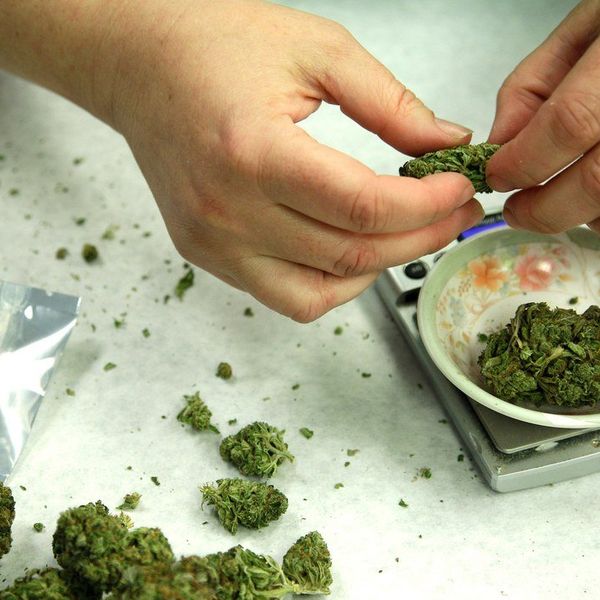A great controversy that has plagued our nation’s state of health is the issue of legalizing marijuana and outlawing a heavily profitable tobacco industry. If we’re being completely honest, there is a multitude of physical health problems that come along with smoking cigarettes, such as lung cancer. Cigarette smoking is responsible for 480,000 deaths a year in the United States. However, despite its historical successes as a consumer product, it is an industry that has been threatened by the emergence of marijuana as a widely available, recreational drug since the 1960s. In addition, as recently as the 1990s, marijuana has gained an increasingly positive reputation as a potential medicinal drug and thus has placed Tobacco companies on their toes, as they could possibly be seeing a reorientation of drug usage attitudes in the United States. Considering that state laws concerning the usage of marijuana have recently undergone a process of taxation (specifically in Colorado and Washington), many people are beginning to speculate why marijuana usage has not been legalized already. Some argue that it is because decriminalizing the drug will send the wrong message, and possibly encourage its use among young people while others argue that its containment is part of a conspiratorial effort by the Tobacco industry to maintain a hold on its customers.
Tobacco companies have certainly made efforts in the past to address the problem of the increasing reputation of marijuana. According to “The Milbank Quarterly: Waiting for the Opportune Moment: The Tobacco Industry and Marijuana Legalization,” there were documents uncovered in 2013, from the Legacy Tobacco Documents Library, that revealed tobacco industry secrets. One being that three multinational tobacco companies (Philip Morris, British American Tobacco and RJ Reynolds) considered manufacturing cigarettes containing Cannabis. These documents highlight the Tobacco industry’s willingness to become involved with marijuana as policymakers seriously begin to consider decriminalization. The Tobacco companies definitely see the emergence of marijuana as a threat, and these documents also show that the companies are interested in gaining a hold on marijuana’s profits, but whether or not the Tobacco industry has a hold on the legalization of marijuana remains to be seen.
The legalization of marijuana also holds serious implications for the war on drugs, and usage among youth, according to an article called “Sending the Wrong Message: Did Medical Marijuana Legalization in California Change Attitudes about Use of Marijuana?” This 2004 article was written as part of a study conducted by “The Journal of Drug Issues,” and it was designed to study the attitudes among youth and young adults towards marijuana right after the legalization of marijuana in California, under the Compassionate Use Act (1996). This allowed for the cultivation and use of medical marijuana with a Doctor’s permission. However, this study conclusively found that there was no convincing data that could support that legalizing the substance encouraged abuse within the general population. Evidence pulled together by this observation presented statistics such as that marijuana use had doubled among youth, and that children who had used marijuana were 85 times likelier to use cocaine than their virgin counterparts. This study, however, was not able to prove its objective, and that is that the legalization of marijuana encouraged use among young teenagers and adults.
Seemingly, many anti-legalization legislators believe that the harms of marijuana are undermined by its supposed medical successes. For example, in a recent report, illustrated in the “Journal of Insurance Issues: Marijuana Legalization: Implications for Property/ Casualty Insurance,” the National Cancer Institute stated in their findings that marijuana slowed or stopped the growth of certain lung cancer cells, and even suggested the marijuana might provide risk reduction. As research since the 1960s has proven, marijuana can have both negative and positive effects on mental and physical health. Nonetheless, the industry continues to grow at an unprecedented rate.
As a result from the unprecedented growth of the marijuana industry, there have sprouted multiple methods on how to ingest the substance. “Edibles” are a popular form of ingesting marijuana because it can be done in the form of brownie, cookies, sodas, etc. Some legislators are even afraid that accidental exposures might increase because of the growth of the cannabis industry. One article called “Legalization of Marijuana for Non-Medical Use: Health, Policy, Socioeconomic, and Nursing Implications,” stated that after medical marijuana had been decriminalized in Colorado, one hospital in the state saw an increase in the emergency room for accidental exposures by children. So legislators could be viewing this all wrong in that they are trying to assess whether decriminalizing marijuana encourages its abuse. Rather, another problem, now that the cannabis industry has skyrocketed over recent years, is that edibles can lead to accidental exposures. There have been regulatory commissions instituted in Colorado to prevent this from happening, but on the other hand, lawmakers also feel that creating official institutions for the marijuana industry would be propping it up like a completely legal industry, which it is not. So how do legislators take action against this green monster? Should they decriminalize it so that they can regulate the growth of it like the true industry it is? Or should they ignore it further?
Another problem that arises from trying to contain the marijuana industry is attempting to analyze its growth and its future. As of right now, the cannabis industry is unpredictable because its success depends on whether more states will decriminalize the substance or not. The unpredictability of the industry’s future is also seen in what type of investment companies become involved. In general, according to “Post-Marijuana Legalization Investment Issues and Risks for Investors in Marijuana Industry,” hedge funds will be the biggest gamblers with the infant marijuana market. Hedge funds, being high-risk investment groups, only add to the uncertainty of the cannabis industry. The article “Sending the Wrong Message” was also seriously outdated in the fact that it did not even consider the accidental consumption of marijuana as a consequence of easing legislative constraints on the substance. The outdatedness of the article shows how far the marijuana industry has come since 2004 when the article was written.
Seemingly, marijuana remains a much more complicated issue than just assessing whether or not there is public consensus for its legalization. One must consider the health hazards of marijuana, but also its supposed benefits. If there is a legalization of medical marijuana, will that encourage youth to look at it in a more positive light and thus increase its usage? There is also the tobacco industry that is also interested in its profitableness, and along with that, there are political tensions between federal law and state law. Marijuana is a complex issue that must be assessed through all lenses of society.





















